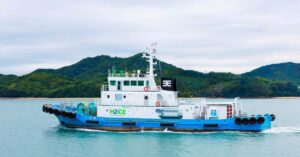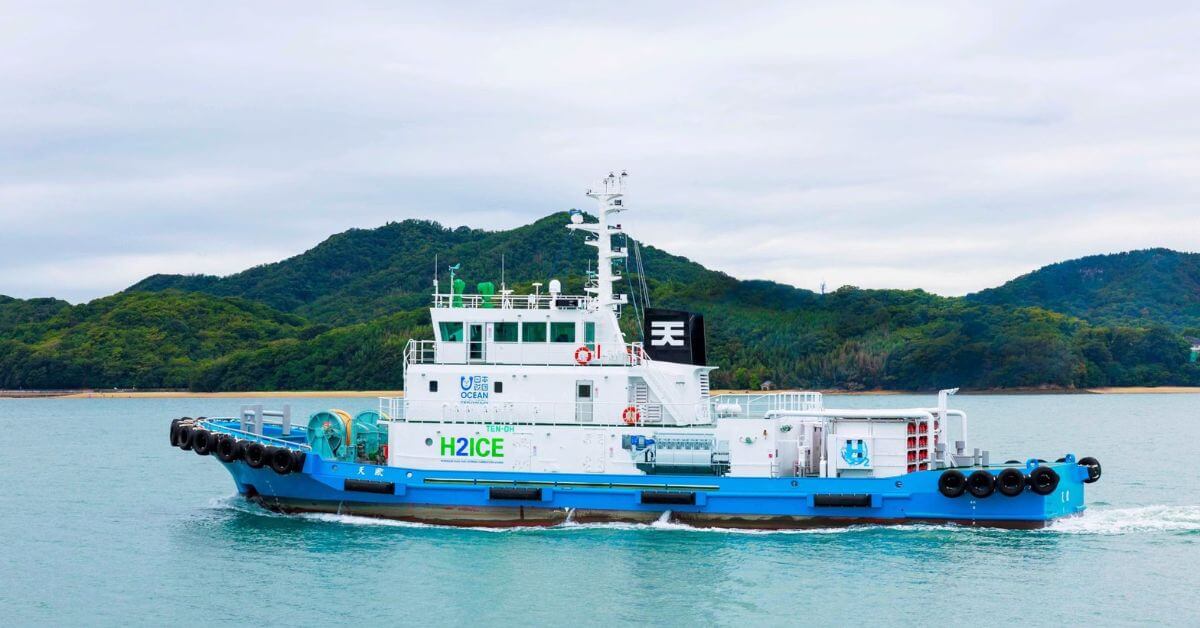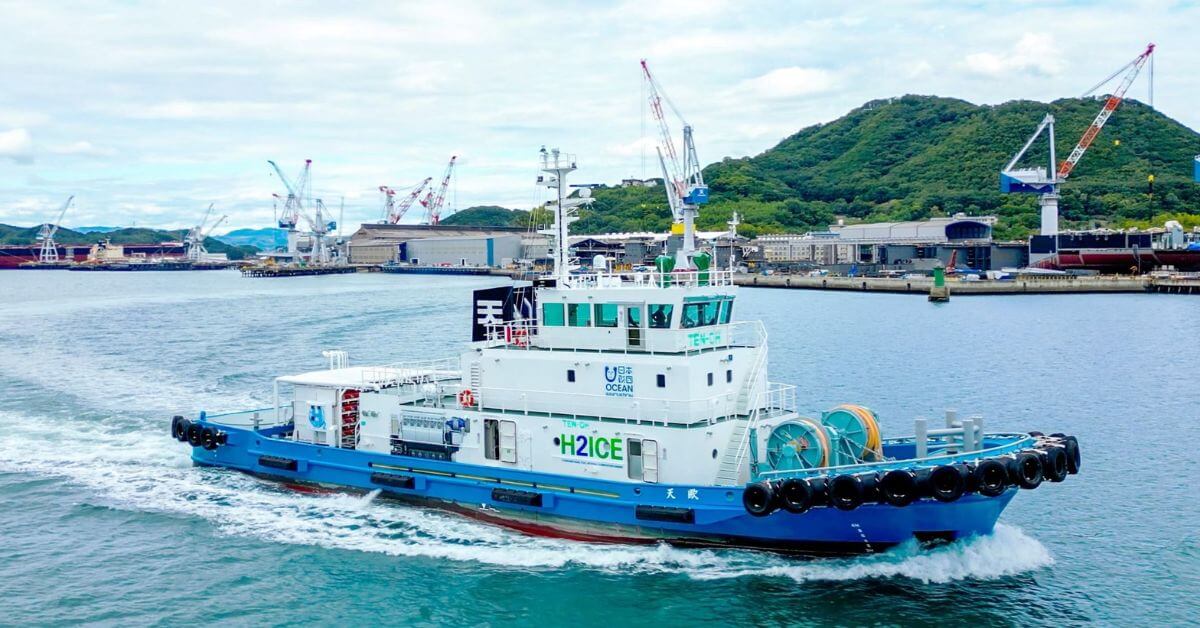
Five New Joinees Among Seven Missing After Crew Boat Capsizes Off Mozambique
October 17, 2025
150-Year-Old Ship Falls Of Clyde Permanently Removed From Honolulu Harbour
October 17, 2025

Tsuneishi Shipbuilding has delivered Japan’s first hydrogen dual-fuelled tugboat, named TEN-OH, at its Fukuyama factory on 15 October 2025.
The vessel is equipped with a BEH2YDRO hydrogen-powered internal combustion engine (ICE) and a high-pressure hydrogen storage system, developed in collaboration with JPNH2YDRO, a joint venture between CMB.TECH and TSUNEISHI Group.
Hydrogen fuel is considered a clean alternative that emits no carbon dioxide when burned, making it a key step towards achieving carbon neutrality in maritime operations.
The tugboat was developed under The Nippon Foundation’s “Zero Emission Ships Project,” which focuses on building vessels with zero CO₂ emissions.
Tugboats are essential in assisting large vessels to safely manoeuvre when entering or leaving ports, requiring both high manoeuvrability and powerful engines.

TEN-OH is powered by twin 12-cylinder hydrogen-blended engines in the 4,400-horsepower class and carries approximately 250kg of hydrogen in high-pressure tanks. This allows the vessel to perform at levels comparable to conventional fuel-powered tugboats while significantly reducing CO₂ emissions.
In case of a hydrogen fuel system failure, the tugboat can safely operate on marine fuel, maintaining the same safety standards as conventional vessels.
Tsuneishi Shipbuilding has stated that it will continue to develop and construct next-generation fuel vessels, aiming to contribute to a decarbonised maritime industry.
The company’s president, Mr Okumura Sachio, said that TSUNEISHI is developing vessels powered by next-generation fuels, including methanol and LNG. He also emphasised that the expertise gained through this project, combined with the collective capabilities of the TSUNEISHI Group, will be used to drive innovation and promote a more sustainable future for shipping.
Reference: tsuneishi
Source: Maritime Shipping News


